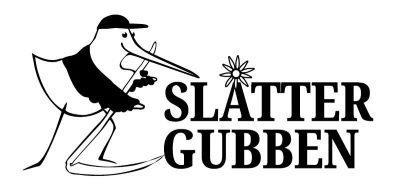Blade hoe small + wedge
Perfect for sapplings! As a vertical tough ax.
- In stock
Description
Note: Description at the bottom on how to assemble the handle!
Blade hoes are widely used abroad instead of shovels. In Sweden, blade hoes have been almost impossible to find. These high-quality Portuguese hoes are excellent tool companions and can be sharpened as sharp as axes. With a fairly blunt edge angle, they can be used with force straight into roots, stumps, etc., so the chips fly! This small blade hoe becomes more like a vertical axe as it has a nice weight to it. At least when it is completely sharp.
The small blade hoe is the best tool for clearing brush, sapplings and small stumps, it is incredibly powerful and always has a good angle towards the ground when standing up. Like a vertical axe, simply put. Works well for clearing aspen brush, removing lilacs with roots, smaller hazelnut stumps and hazelnut bouquets that can be completely removed with the roots, smaller oak brush, etc. Both one and two-handed grip can be used. For brush clearing, it is best to cut the handle to 65-75 cm so the "strike" can go horizontally between your feet without hitting your groin (if you have one). Some preffer even shorter shafts, down to 40cm - especially if you work a lot with one hand. Feel free to carve or grind out a knob the top and give the shaft a bit oval shape for better grip when hands and handle are slippery!
The blade hoe can be used to turn the soil in the garden, chop away brush below ground level, or work with when leveling mixed terrain with roots, stones, soil, etc. A versatile tool!
It is also small enough to be carried in a backpack if the handle is shortened to about 50 cm. Perfect tool for building an MTB trail or downhill track for mountain biking, for example.
Incredibly sturdy, the blade itself is about 5 mm thick. The blade is 9.5 cm wide at the edge and 19 cm from the edge to the shaft attachment. Not curved in any direction.
Weight: 1.5 kg (hoe + 70 cm handle).
Note:
How to prevent the handle from breaking:
These handles are very strong and can withstand the most powerful strikes without issue. However, they cannot be bent with unlimited force—this is often when the handle breaks. Avoid prying up roots and stones with full force. The risk of breakage decreases with shorter handles. Personally, I’ve come to prefer handles around 50–55 cm—lighter, more maneuverable. I often work while kneeling.
Handles can also break if, during a swing, they accidentally hit something with a "sharp edge" (e.g., a branch or stump edge) before the hoe reaches its target—similar to snapping a stick over your knee.
Handles can last a very long time but not forever. If you use your hoe frequently and with enough force, you will eventually need to replace the handle.
Replacement handles are sold separately, and it might be worth keeping a spare at home!
Assembling!
Video about assembling hoe and shaft
Let the handle dry indoors near a radiator for a couple of weeks first—it should be as dry as possible before being hammered in to ensure it stays in place.
- Attach the hoe to the handle. In the video, we apply grease to the handle, but this is not necessary.
- On the opposite side of the hoe head, near the eye (hole), there is a protruding solid metal square. Use this square as support against a sturdy anvil or similar surface.
- Hammer the handle firmly into the hoe using the back of an axe or a sledgehammer. The better the support, the more you can drive the handle in.
- If, after hammering, more than 1 cm of the handle sticks out, saw it down to a maximum of 0.5 cm.
- Finally, hammer in the wedge. Done!
When we assemble them ourselves, only about 1 in 10 handles need to be trimmed—the rest can be hammered in fully.

